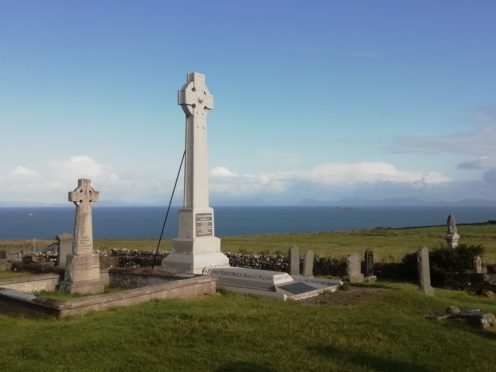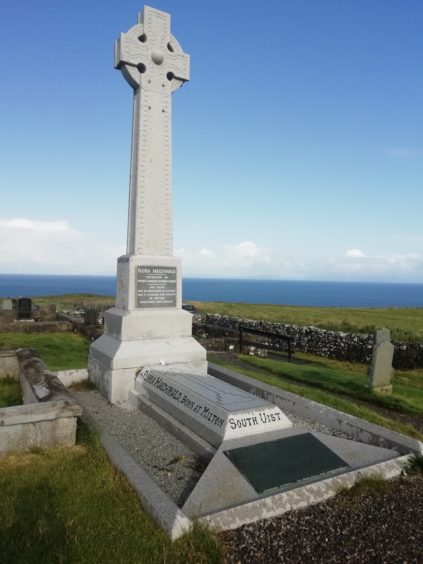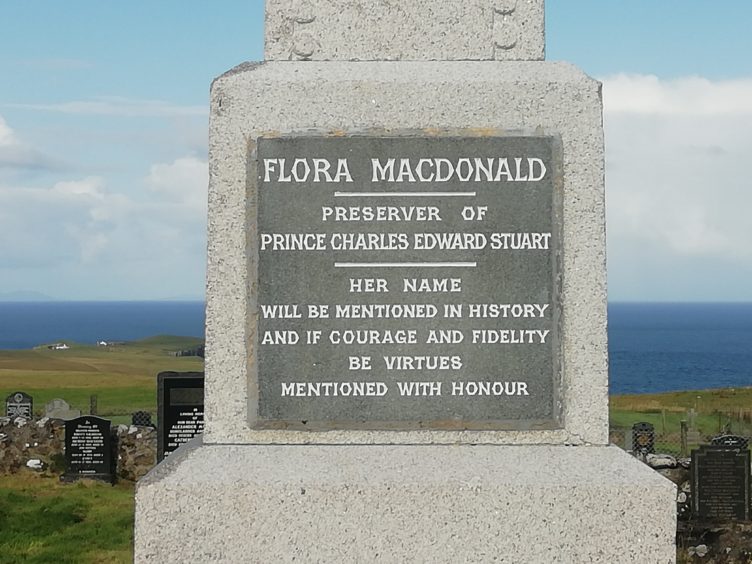An island monument to a well-known supporter of the Jacobite claim to the Scottish crown has been restored.
A monument to Flora MacDonald describing her as the “Preserver of Prince Charles Edward Stuart” has been cleaned and a boundary wall restored thanks to the efforts of Kilmuir Community Council in partnership with Highland Council.
The Flora MacDonald monument is in Kilmuir burial ground, located on the Trotternish peninsula of the north west coast of the Isle of Skye.
Ms MacDonald, who was born on South Uist, was a member of the MacDonalds of Sleat clan, helped Charles Edward Stuart – or Bonnie Prince Charlie – escape government troops after the Battle of Culloden in April 1746.
While her family supported the government during the 1745 uprising, Ms MacDonald claimed to have assisted Bonnie Prince Charlie out of sympathy for his situation.
For her efforts, she was arrested and held in the Tower of London. She was later released under a general amnesty in June 1747.
She later married Allan MacDonald, of Skye, and the couple emigrated to North Carolina in 1773.
The couple’s support for the British during the American War of Independence meant the loss of their American estates, and they returned to Scotland. She died in 1790 and is buried in Kilmuir Cemetery.
The inscription on the tall Celtic cross at the monument reads “Flora MacDonald. Preserver of Prince Charles Edward Stuart. Her name will be mentioned in history and if courage and fidelity be virtues mentioned with honour”, was written by the eminent celebrity writer of the time, Samuel Johnson.
Mr Johnson met Flora MacDonald in 1773 during a visit to the island. He described her as “a woman of soft features, gentle manners, kind soul and elegant presence”.
Chairman of Kilmuir Community Council, Stephen Varwell said: “The community council helped with local fundraising and activities to assist with the upkeep and enhancement of this important landmark, which is well visited by tourists.
“Over the past two years we have spent several thousand pounds repairing the stone boundary wall.
“We’ve now had the Flora MacDonald monument cleaned thanks to the efforts of the Highland Council and to donations from Clan Donald Lands Trust, £500, and the Flora MacDonald College in North Carolina of $626.”
Highland councillor John Gordon, said: “Highland Council was delighted to collaborate with Kilmuir Community Council and support their restoration project of the Flora MacDonald monument. We organised the procurement of specialist contractor Jon Hearach Memorial Ltd and are very pleased with the resultant works.”












